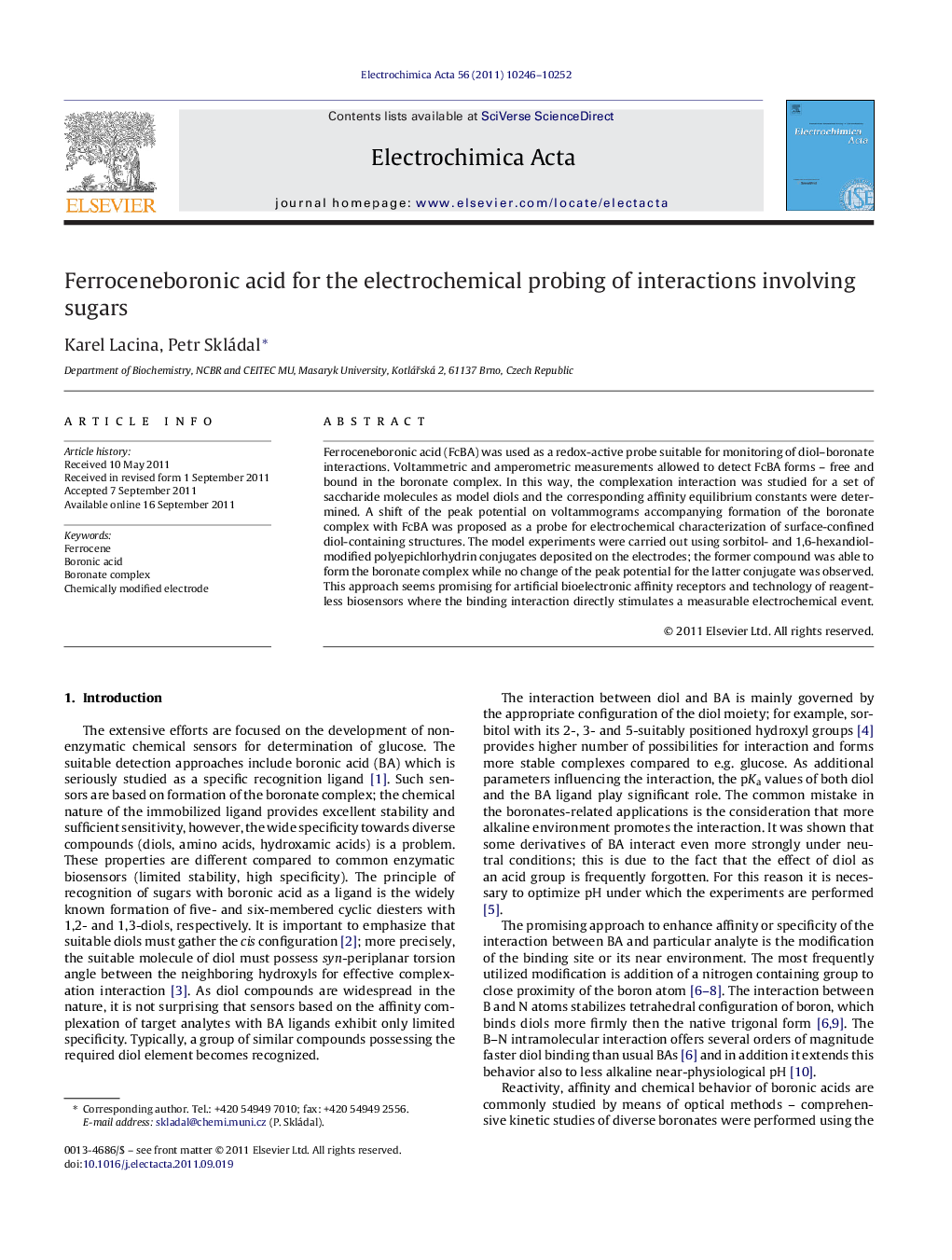| Article ID | Journal | Published Year | Pages | File Type |
|---|---|---|---|---|
| 10268761 | Electrochimica Acta | 2011 | 7 Pages |
Abstract
Ferroceneboronic acid (FcBA) was used as a redox-active probe suitable for monitoring of diol-boronate interactions. Voltammetric and amperometric measurements allowed to detect FcBA forms - free and bound in the boronate complex. In this way, the complexation interaction was studied for a set of saccharide molecules as model diols and the corresponding affinity equilibrium constants were determined. A shift of the peak potential on voltammograms accompanying formation of the boronate complex with FcBA was proposed as a probe for electrochemical characterization of surface-confined diol-containing structures. The model experiments were carried out using sorbitol- and 1,6-hexandiol-modified polyepichlorhydrin conjugates deposited on the electrodes; the former compound was able to form the boronate complex while no change of the peak potential for the latter conjugate was observed. This approach seems promising for artificial bioelectronic affinity receptors and technology of reagentless biosensors where the binding interaction directly stimulates a measurable electrochemical event.
Related Topics
Physical Sciences and Engineering
Chemical Engineering
Chemical Engineering (General)
Authors
Karel Lacina, Petr Skládal,
